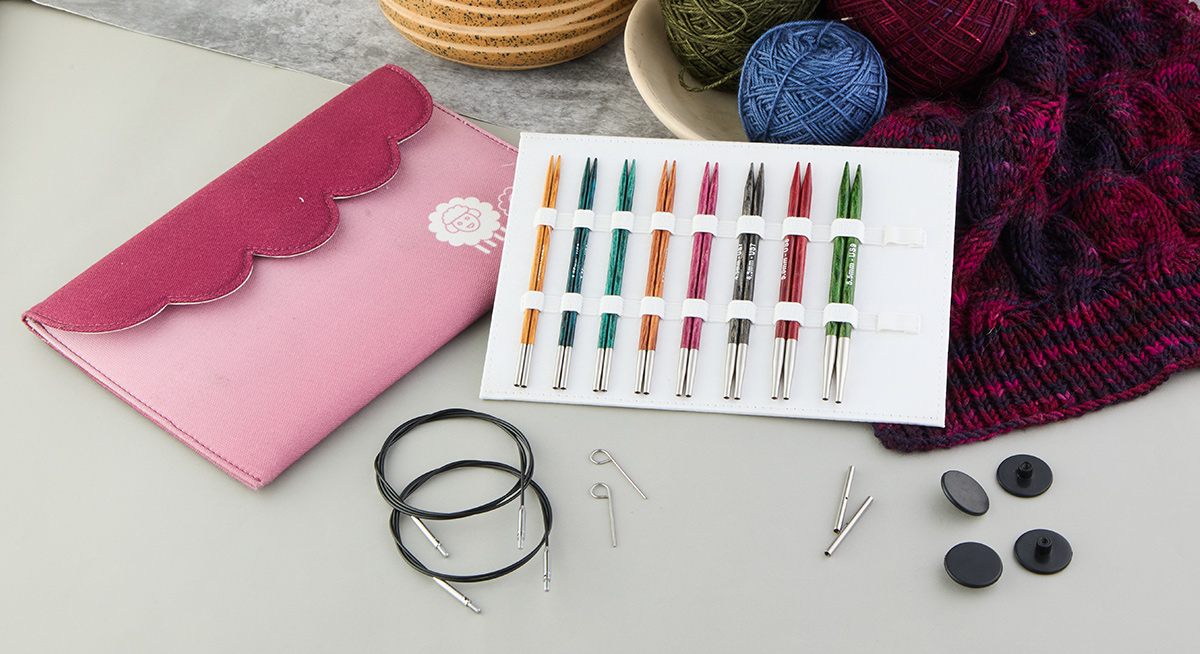In the world of knitting, there’s always something amazing to learn and make. Even after years of handling your knitting needles, there’s always something interesting to learn and include in your projects. Let’s take the example of knitting increases for projects such as socks, hats, and garments. Basically, increases mean increasing the stitch count in a row or round. Among these techniques, there’s the Central Double Increase (CDI) that stands out for its versatility and ability to create beautiful, symmetrical increases in your projects. The central double increase takes one stitch and turns it into three stitches and stays centered without any slant. This works for projects that require a quick increase in the stitch count plus it looks beautiful in lace patterns. Excited to know more? In this blog, we’ll explore the technique of knitting central double increase in detail and learn about practical applications.
What is the Central Double Increase?
An advanced knitting increase technique, the Central Double Increase (CDI), creates two new stitches from one existing stitch. The end result will be three stitches. Unlike traditional increases that lean towards a side, the CDI increases from the center, resulting in a balanced and seamless result. Most increases in knitting lean in one direction or the other; however, the CDI is an example of a double increase that has no lean. The two increased stitches appear on both sides of the stitch used for the increase, which means the opposing leans in the increase even out.
This makes it ideal for projects where symmetry is crucial, such as circular shapes and raglan sleeves. So, whether you are knitting with DPNs a hats or beanies, or even baby yoke sweaters, CDI comes in handy. Similarly, if you are working on an adult sweater with raglan sleeves or a yoke with circular knitting needles, you will find the centered increase technique a perfect match. For projects knit back and forth, the increase technique is not that popular but can be easily worked whenever working on lace.
The CDI or Central Double Increase is definitely not a knitting increase for beginners, but that doesn't mean it's super hard to do. Sometimes also abbreviated as INCTO3 (increase to 3 stitches), this increase has many benefits and features that simply aren't present in other types of increases. Check out our guide on how to increase a stitch in knitting to explore the various techniques and their applications.
Step-by-step instructions for knitting a Central Double Increase (CDI)
Work on a project according to pattern instructions. If you are looking forward to practicing on a swatch, knit for two or three rows or rounds. And, when you get to the row/ round to work a central double increase, here's a step-by-step breakdown of knitting the CDI:
Step 1 - Knit Back Front (KBF)
Insert your right-hand needle into the stitch you want to increase (typically a center stitch) as if to purl, but instead, knit it. Leave the stitch on your right-hand needle.
Step 2 - Knit Front (KF)
Still with your right-hand needle, knit the same stitch again. Don't slip it off the needle yet.
Step 3 - Catch the Lifeline
You'll see a small strand of yarn vertically between the two stitches you just knitted. This is your "lifeline." Use the tip of your left-hand needle to catch this strand from back to front.
Step 4 - Knit the Lifeline
With the yarn strand held on your left-hand needle, knit it through the back loop. Now you have three stitches on your right-hand needle.
Step 5 - Complete the Increase
Knit one more stitch regularly (through the front loop) to complete the increase. You should now have a total of four stitches on your right-hand needle, seamlessly created from the initial stitch.
Tips for Flawless CDI
- Maintain even tension throughout the process.
- Work with a gauge swatch to get practice and see if you are comfortable with yarn, or needle combination.
- Use a cable needle for easier manipulation of stitches if needed. You can also keep a repair hook close by to get assistance with working with the stitch.
- Choose pointy-tip needles. The Mindful Collection offers stainless steel knitting needles that have precise tips and a smooth needle body with an inspiring word to motivate knitters.
Unveiling the Applications of Central Double Increase (CDI)

The CDI offers a treasure trove of possibilities in your knitting projects. Let's explore some common applications:
Circular Shapes: The symmetrical nature of the CDI makes it perfect for knitting hats, bags, and other projects requiring a smooth, rounded appearance.
Raglan Sleeves: Achieve that clean and tailored look for raglan sleeves by incorporating CDIs where the body and sleeves meet.
Necklines: Create a beautifully curved neckline with strategic placement of CDIs.
Colorwork: Whenever you are knitting colorwork patterns, CDI allows you to seamlessly blend colors in your projects by increasing stitches at the color change without creating bulky ridges.
Lace Knitting: Achieve intricate lace patterns with well-placed CDIs for a delicate and airy look.
By mastering the CDI, you unlock a world of design possibilities in your knitting journey. So, grab your needles, and some yarn, and get ready to experiment with this versatile and rewarding technique!
Feeling adventurous? Explore other handy knitting increase techniques. To expand your knitting skills, you can also explore the decrease counterpart of central double increases. Central Double Decrease (CDD) is the decrease technique that balances CDI turning three stitches into one working beautifully for lace patterns, raglan sleeves and toys.












